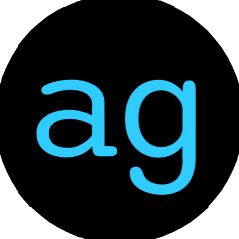Most feature flag explainers begin by explaining that feature flags are glorified if statements. While that’s true (to a point), feature flags wouldn’t be as versatile or as popular as they are, if that’s all they were. Indeed, you wouldn’t need a feature flag – you could easily achieve the same thing with an environment variable.
Catering to the client-side
While OpenFeature initially focused on support for server-side feature flagging, we know that a lot of feature-flagging (likely the majority) happens on the client - mobile apps and frontend web apps. As such, we're currently finalizing a proposal which extends the OpenFeature spec to support client-side use cases. By the way, if you're working on a feature flagging framework, whether it's commercial, open-source, or internal product, the folks at OpenFeature would love to hear more about how you approach client-side flagging.
In this post I'll summarize those changes, but to understand them in context we'll first talk about what makes client-side feature flagging different before diving into how that will impact the OpenFeature APIs.
Specification hardening and 1.0 SDKs
Early this year, OpenFeature announced its intent to bring a standard to the rapidly growing development practice of feature flagging. In June it was accepted as a Cloud Native Computing Foundation Sandbox project. Now, we're pleased to announce a new milestone: OpenFeature has released 1.0 versions of its .NET, Go, Java, and JavaScript SDKs!
Configuring a logger for the go-sdk
Logging is the act of keeping a log. A log (in this case) records events that occur in software.
Subject to many opinions and differing principles of best practice, the best thing we could do for the go-sdk was
to create an implementation as open & configurable as possible. To achieve this, we've integrated logr,
this allows the use of any logger that conforms to its API.
Applications may already have a chosen logging solution at the point of introducing openfeature. An integration with logr
may already exist for their chosen solution (integrations exist for many of the popular logger packages in go). If not, they could write their own integration.
Creating a Provider for the go-sdk
A Provider is responsible for performing flag evaluation, they can be as simple as an interface for a key value store, or act as an abstraction layer for a more complex evaluation system. Only one Provider can be registered at a time, and OpenFeature will no-op if one has not been defined. Before writing your own Provider, it is strongly recommended to familiarize yourself with the OpenFeature spec.
In this tutorial I will demonstrate the steps taken to create a new Provider whilst conforming to the OpenFeature spec using a simple flag implementation. The flag evaluation will be handled by a simple JSON evaluator and flag configurations will be stored as environment variables.
The following section describes how the flag evaluator portion of this project has been constructed, to skip to the Provider specific implementations, click here.
Creating a Hook for the go-sdk
A Hook taps into one or more of the flag evaluation's lifecycle events (before/after/error/finally) to perform the same action at that point for every evaluation. In this blog post, we'll look into what it takes to create an OpenFeature hook in Go that verifies that the return value is a valid hex color.
Collection of external articles
OpenFeature - a standard for feature flagging
I've recently been involved1 in OpenFeature, an effort to define a standard API and SDK for feature flagging. At first glance, you might wonder whether feature flagging needs a standard. It's just a function call and an if statement, right? Well, no, not really. I'll explain why, and then talk about some of the benefits that I hope OpenFeature will bring to the space.
The Feature Flagging iceberg
When I talk to people about adopting feature flags, I often describe feature flag management as a bit of an iceberg. On the surface, feature flagging seems really simple, almost trivial. You call a function to find out the state of a flag, and then you either go down one code path, or the other. However, once you get into it turns out that there's a fair bit of complexity lurking under the surface.

Organizations that begin using feature flags at any sort of scale quickly learn that they need some of that functionality lurking under the surface. This is why flag management platforms like LaunchDarkly and Split.io exist. Their value is not in providing a fancy if statement, it's in all those extra features lurking below the surface - a web-based management interface, the ability to perform controlled incremental rollout, permissions and audit trails, integration into analytics systems, and so on.
- I'm currently serving as a member of the Bootstrap Governing Committee↩





